Forget Tesla: the smartest electric truck I’ve driven this year is a Rivian
Cute, clever and fun, the smartest electric car of 2025 is… a van from California

Elon’s Cybertruck is an awkward, angry ‘f*ck you’ of an EV. All hard edges and Judge Dredd brutalism, it doesn’t want to be your friend. It spends its days in its room with the music up loud and the curtains closed.
Rivian’s delivery van, the RCV – also developed in California; also all-electric – is different. It wants to nuzzle into your neck, roll onto its back for tummy rubs and be friends for life.
Cruising sun-dappled suburban Los Angeles, all is well with the world. Sitting comfortably with a view to die for – the panoramic windscreen is vast like the floor-to-ceiling glass of some beachside apartment – the scene is one of rhythmically ticking sprinklers and manicured lawns. Retired gentlemen with their socks pulled up to their knees give me the thumbs up. Folks out walking their cockapoos smile shyly. And with my huge window rolled down and the ‘curbside’ door wide open, the afternoon breeze in the cab is warm and perfumed with the blissed-out smells of early summer.

My Rivian RCV is over six metres long, lacks a rear window and weighs a little over three tonnes. I’ve been driving it just five minutes. I should be a nervous wreck. In normal traffic it ought to feel like an aircraft carrier on a boating lake, not least because Californian traffic is as unforgiving of dawdlers as rush-hour Rome.
But I’m relaxed and happy, darting away from each stop sign on a rolling wave of instant electric drive, revelling in the RCV’s weirdly agile handling and, thanks to the vast multi-camera feed, feeling like I’ve got eyes in the back (and sides) of my head. When I take a wrong turn and need to make up a little time, the Rivian’s tight turning circle (just 14.3 metres, and this without rear-wheel steering) and effortless performance have me right back on track. And when I reach my next drop, the Rivian and I are in sync like old work buddies. I come to a halt on one-pedal regenerative braking alone; it’s pegged pretty high but you soon get used to it, and makes a lot of sense when you’re constantly stopping and starting. When I push the stalk into Park it sends the electric door to the cargo area firing open, for quick and easy access to the next package.
Designed as a workhorse, the RCV is an oddly charming vehicle. It’s cuter than a Honda E, more spacious than an EWB Bentayga and as big on feelgood fun as a Caterham. Initially developed by EV-only brand Rivian in cahoots with Amazon (the e-commerce giant had an exclusive deal until 2023; HelloFresh, with 70 vans to date, is the first big name to come onboard since), the RCV is now shaping up to be a sustainable revenue stream for Rivian; handy income as the funky start-up works to mature into a profitable business.
‘The semi-enclosed rear wheels call to mind old Citroëns and Le Mans-winning Jaguars. ‘

Steered by the affable and infectiously enthusiastic RJ Scaringe, Rivian’s in a critical phase as it establishes a joint venture with the VW Group, sprints to bring a second US production facility online and expands from a line-up of two closely related models (the R1T pick-up and R1S SUV) to a complete range (the smaller, simpler and lighter R2 SUV launches next year, with the uber-cool R3 hatch to follow).
Outside Rivian HQ, in the California sunshine, the RCV looks great. The design language is utilitarian and chunky, and the friendly face and radiused corners also call to mind the inviting friendliness of Rivian’s passenger cars. The looping rear, with its full-height rear door and neat light bar that runs right over the top of the back of the vehicle, is particularly nicely realised, while the semi-enclosed rear wheels call to mind old Citroëns and Le Mans-winning Jaguars.
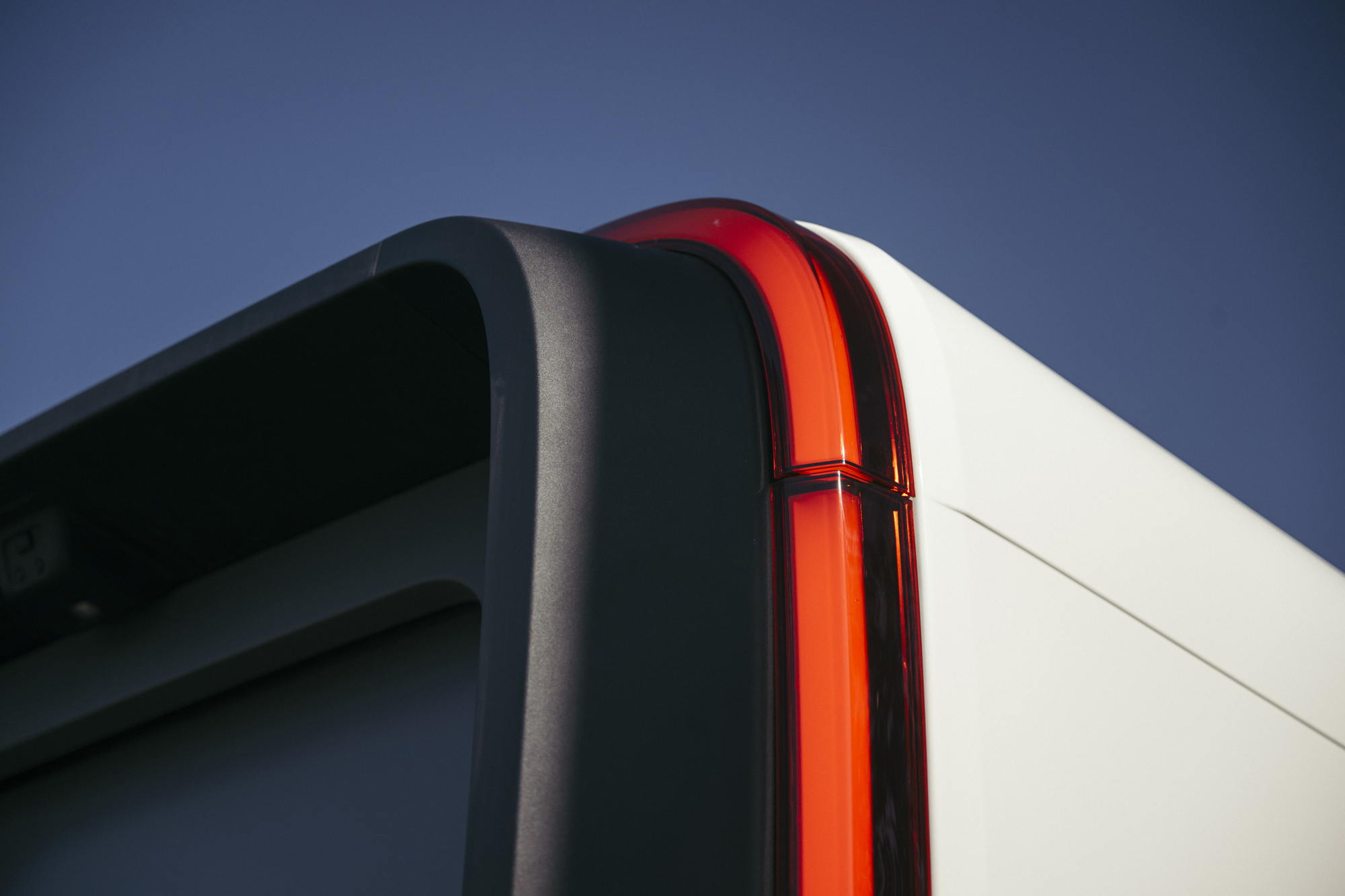
Two versions exist currently, the Delivery 500 and the Delivery 700. Both use a 100kWh battery pack supporting 11kW AC charging and 100kW DC fast charging, and if the latter sounds a little flat in this era of 320kW-plus rapid-charging Taycans, that’s because fleet operators have different needs. Affordability is more important when charging will be done overnight anyway.
A single e-motor powers the front wheels to the tune of 320hp and 316lb ft. Range is rated at 161 miles for the 500 and 160 miles for the bigger 700. Our van showed a range of 146 miles 89 per cent charged. And again, if that doesn’t sound like much, consider a) a frontal area like a billboard and b) urban delivery drivers typically cover half that distance in a shift.
Everything about the RCV is designed to be easy, and the brief was simple: make the thing so good no delivery driver would want to go back to anything with a combustion engine. The cockpit might be necessarily sparse but the visibility is exceptional (quarter lights help mitigate pillar blind spots), the (ventilated) driver’s seat is all-day comfortable and the twin displays are beautifully curated.
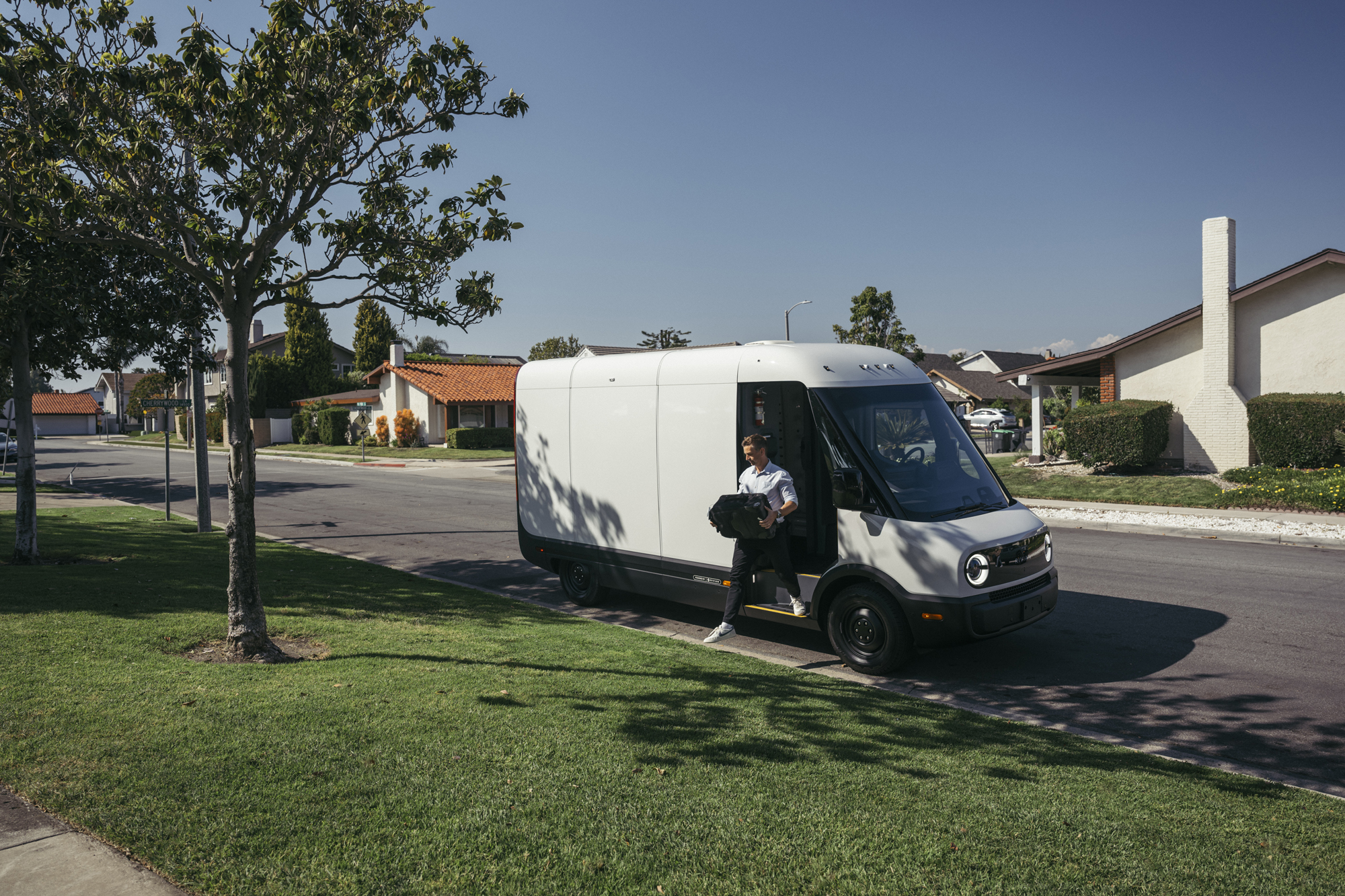
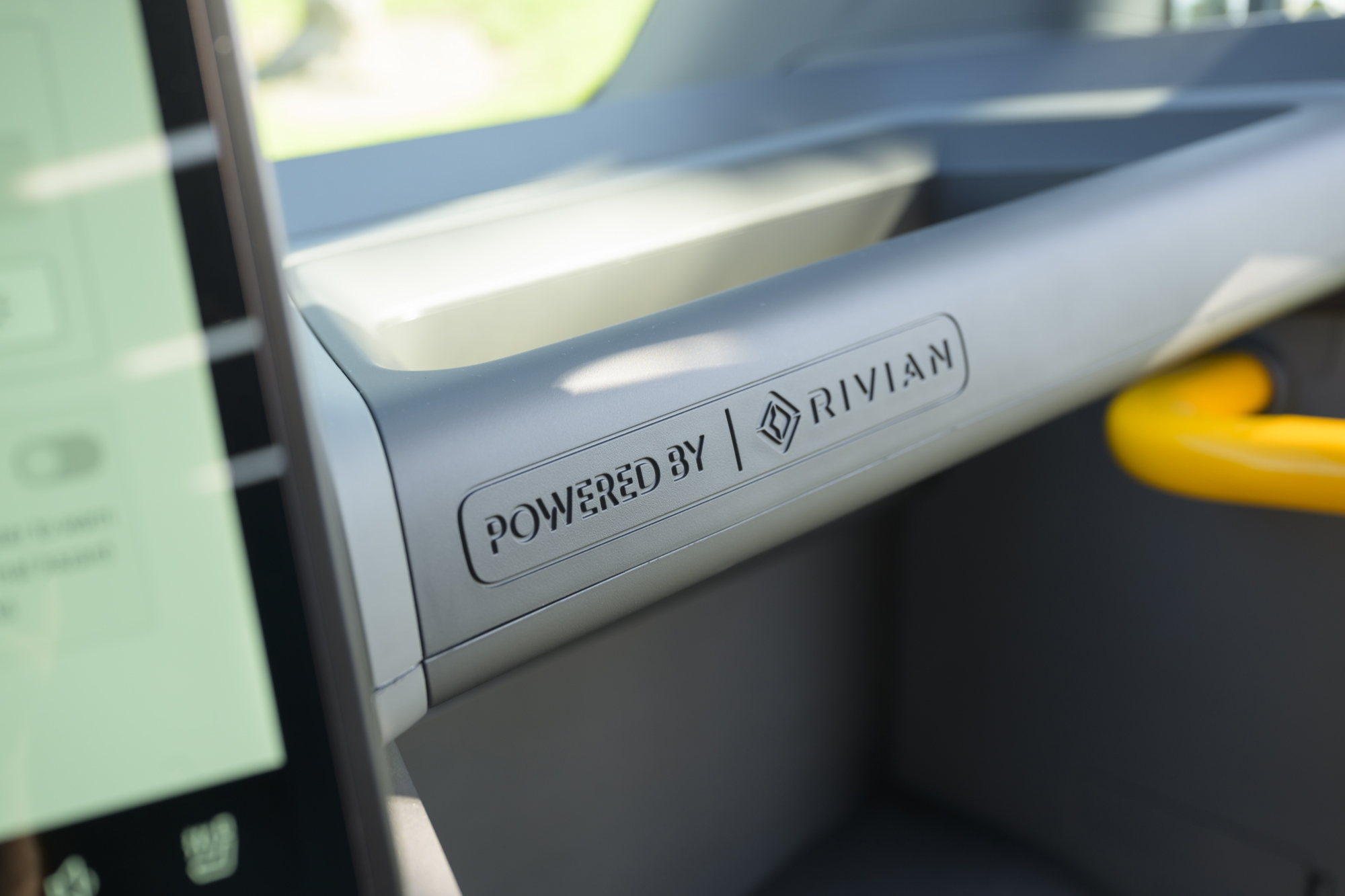
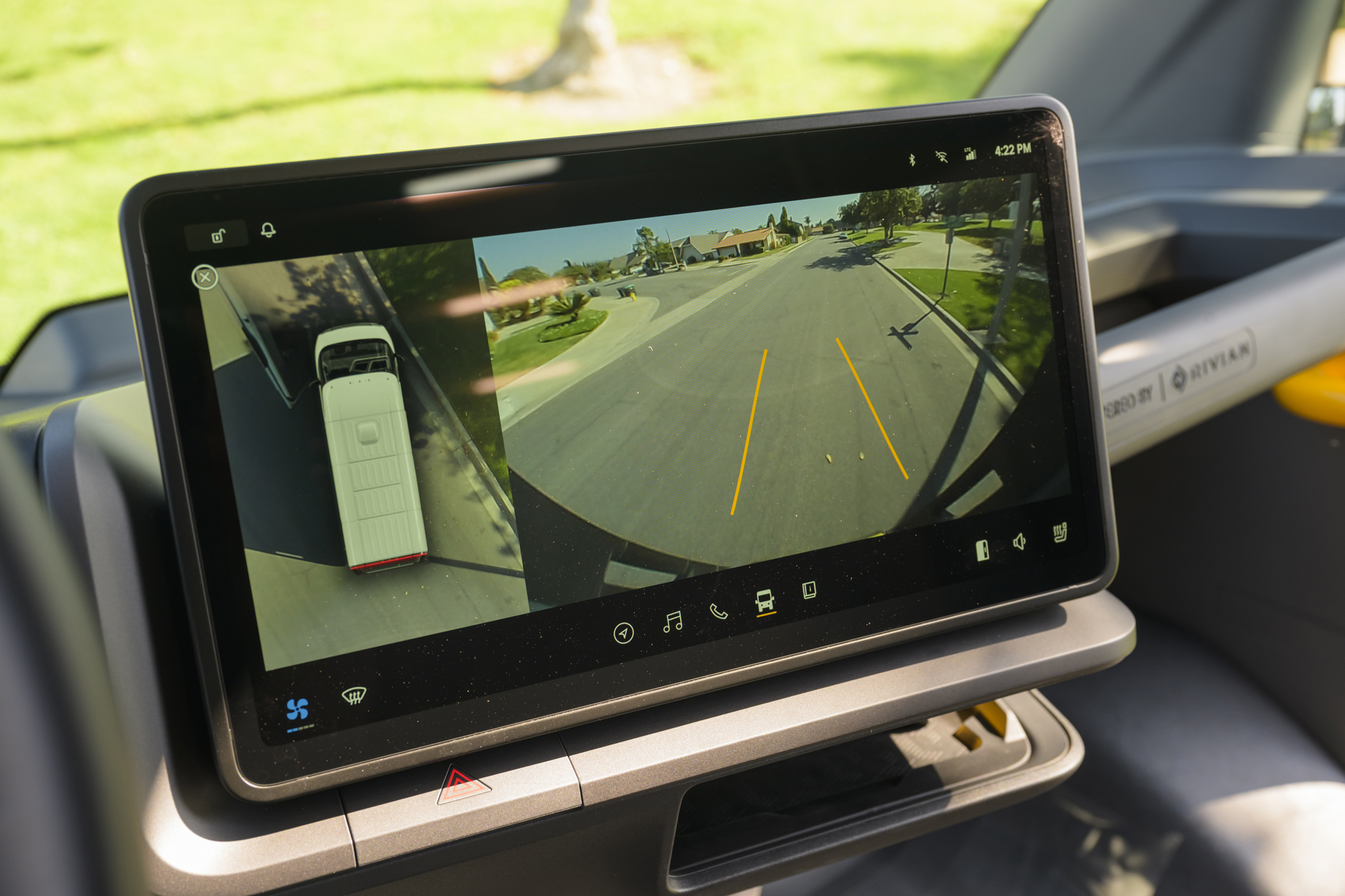
Ahead of you, the binnacle shows speed and PRND, with navigation floating between the two. The main screen has a few set-up options (cargo bay light brightness, charging options) but mostly boosts your already mighty visibility, blending several feeds to give you a drone view and a vast rear view from the main reversing camera, mounted high on the trailing edge of the roof. There really is no excuse for reversing into anyone or anything. You also get adaptive cruise and lane-keep assist, a nice little flat-bottomed steering wheel, wireless phone charging, plenty of grab handles and enough room in the back (certainly towards the end of your shift) for a house party.
My half an hour bothering the fine people of Tustin, Orange County, in the RCV is a joy from start to finish (for me, if not for them). Unladen at least, the RCV drives nicely, and likely far better than it needs to, with strong, near-silent performance, at least at town speeds, very little bodyroll as you swing round corners, and a soul-soothing combination of pillowy refinement and falling-off-a-log ease of use. The main impression is of real fitness for purpose; of a vehicle designed by people who care, for people who know precisely what they need. The R1S and R1T have the same qualities, though they too are consequently expensive in their worlds. Rivian’s yet to disclose when, or even if, non-fleet sales might begin (the 500’s priced from $79,900 for fleet users in the US), nor whether it plans to create its own camper version – although that would be a perfect fit with the brand’s adventure-loving, outdoor-living vibe.
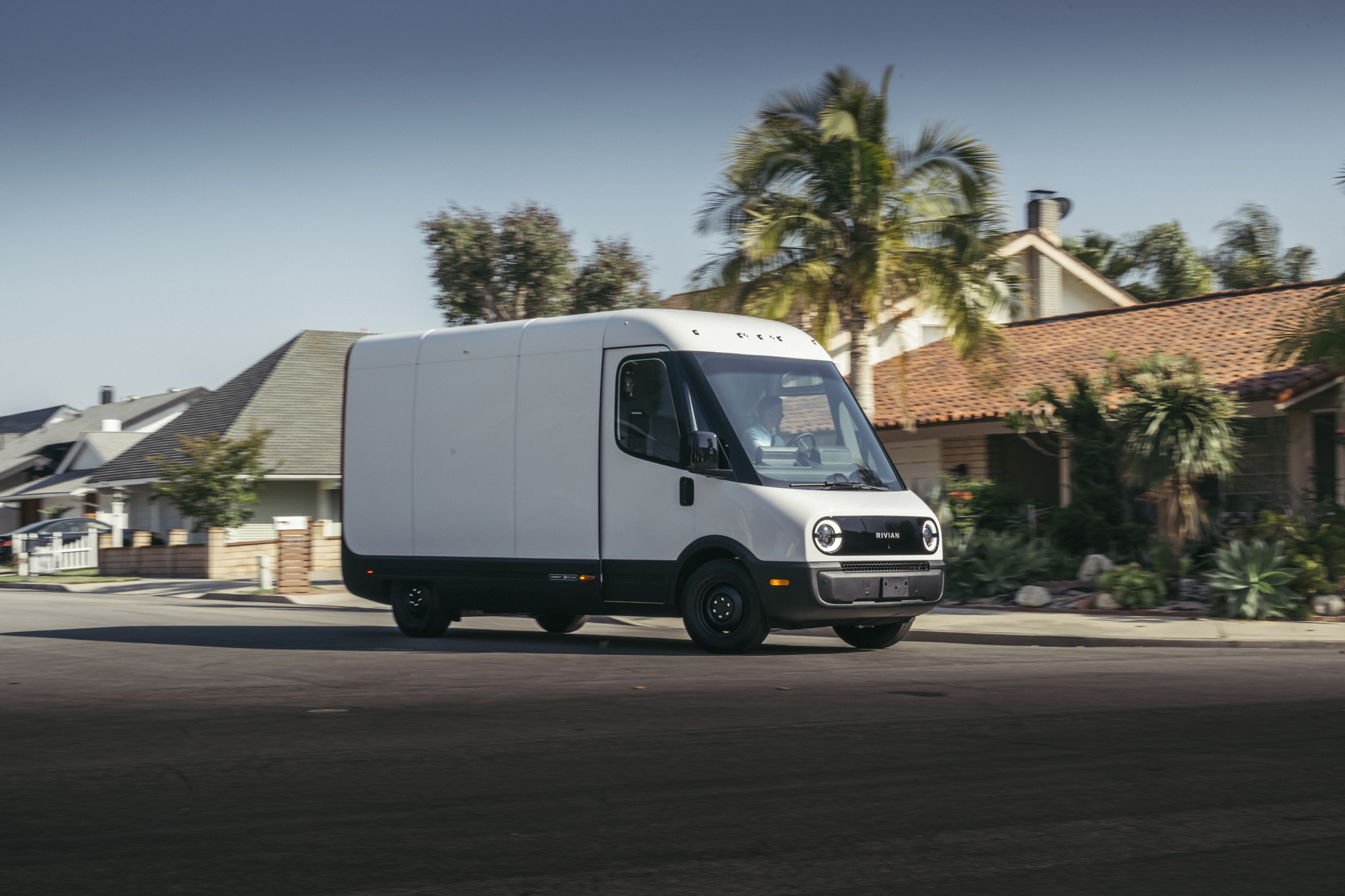
Heading back to Rivian HQ, we finally catch a flying e-bike at a red light. The two-wheeler, which looks no chunkier than a BMX but appears quite capable of troubling the urban speed limit with no pedalling, has been tough to keep up with. Now imagine an e-bike blessed with a good dollop of Rivian magic… Based on our time with the RCV, that’s a pretty exciting prospect. And we’ll see it soon, when Rivian spin-off firm Also shows its first products later this year. We’ll take an RCV camper with an Also on the back, hold the Cybertruck…

